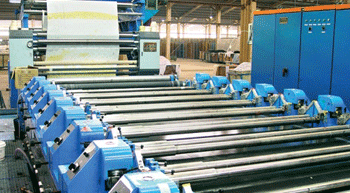
Wet processing: The road ahead
Textiles have always played a vital role in enhancing the comfort of human life and increasing world population, drives the dynamism and growth potential of the industry. Textile is one of the very few industries, where all the stakeholders involved work in tandem with each other, starting from fibre
Textiles have always played a vital role in enhancing the comfort of human life and increasing world population, drives the dynamism and growth potential of the industry. Textile is one of the very few industries, where all the stakeholders involved work in tandem with each other, starting from fibre manufacturers to machinery manufacturers, dyestuff and finishing chemicals manufacturers and finally the retailers. It is believed that colouration of textile materials was practiced as early as 3000 BC by both the Chinese and Indians, and the craft was prevalent in Iran and Egypt too. Dyestuff was generally extracted from various plants and insects until 1856, the year which witnessed the invention of synthetic dyes by William Perkin. The first fibre reactive dye became possible in the year 1954 with the discovery of dichlorotriazinyl dyes, almost 100 years after Perkin´s breakthrough. During that period, many natural finishing chemicals were also slowly replaced by synthetic substances to replicate and produce various functional effects even in traditional clothing and garments.
The textile industry has generally been considered as resource intensive. The annual global production of textile materials, at 60 billion kilograms, requires between 6,000-û9,000 million m3 of water and consumes 1,074 billion kWh or 132 million metric tonnes of coal equivalent of power, of which as high as 60 per cent is consumed in textile wet processing (nearly 18 kWh per kg). Western countries blame the eastern part of the globe for energy and water crisis, a fact that is undeniably true since more than a third of population live in this region and also expect better living conditions. Disastrous predictions on environmental impact given by various agencies send alarming signals to every one of us; melting glaciers, shrinking rivers, world war on water and the depletion of fossil fuels is today forcing manufacturers to calculate footprints in terms of carbon emission, water consumption and machinery utilisation. Though there is no such thing known as zero environmental impact, the smart way to respond to these challenges is to respond collectively as an industry rather than making intangible efforts individually.
A logical approach for sustainable manufacturing in the preparatory processes, considered by both researchers and industry, is to shorten the process sequence by combining desizing-scouring-bleaching, popularly known as DSB process. Solvent assisted single stage preparatory or combination of enzymes for DSB need to be implemented for reducing footprint at the preparatory stage.
More developments in the area of coloration, printing, and finishing are realised today and expected in future too, in terms of auxiliaries, dyes, pigments and finishing chemicals. Many dye leveling agents have been developed to improve the diffusion of dyes into the fibres and reducing impact on effluent generated. Nearly, 20 per cent of global cotton production goes for denim production using synthetic indigo dyes and the process houses need to focus on re-use of dye baths to optimise the consumption of dyes and changeover to glucose in place of hydrose to reduce the COD loads in the effluent. Major problems associated with manual processes, in dyeing, have been alleviated with auto-dispensing systems. Digital textile printing technique, the easy to use and environmental-friendly process, is expected to make significant impact in dyeing and finishing also. Heavy dependence on alkyl phenol ethoxylates, phthalates and PVC are expected to be substituted by water based quick drying inks. Today, every fashion brands have a wish list of the so called ´restricted substances list´ to ensure the reduced use of potentially toxic chemicals and ensure sustainability. Value added rejections arising out of garment processing, slow down the commercial acceptance that needs to be addressed through concurrent developments in other branches of engineering. It is p



